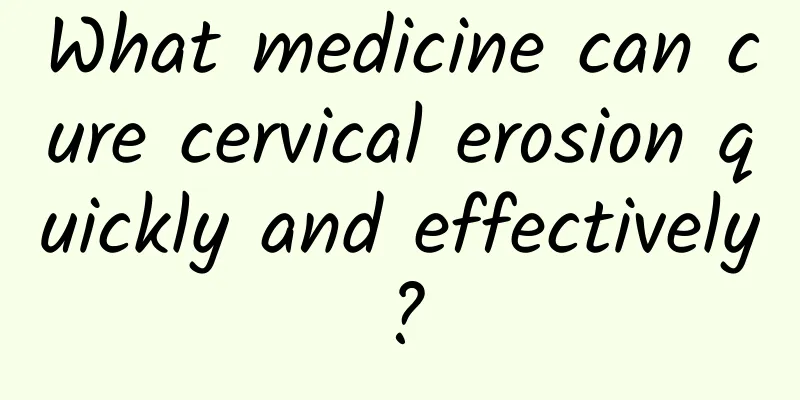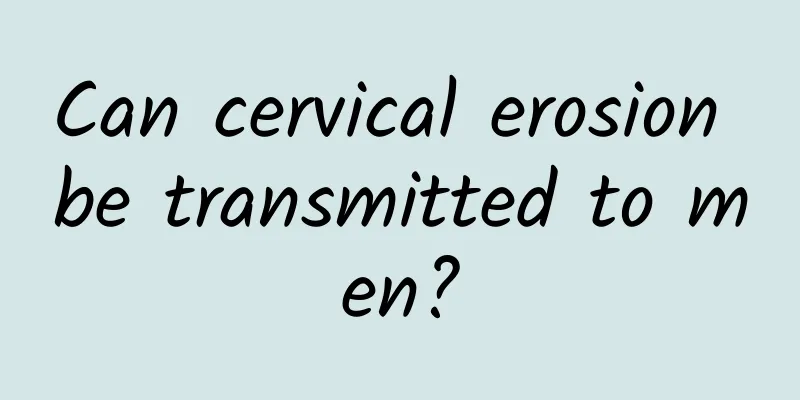What are the methods for detecting cervical precancerous lesions?

|
We must actively master the examination methods for cervical precancerous lesions. Only by correctly mastering the examination methods for cervical precancerous lesions can we make an accurate diagnosis and treatment. Next, we will give a detailed interpretation of the examination methods for cervical precancerous lesions. Cervical smear cytology examination: This method can detect precancerous lesions and early cervical precancerous lesions. Due to the false negative rate, patients should have regular examinations. Iodine test: Normal cervical and vaginal squamous epithelium are rich in glycogen and can be stained brown by iodine solution, while cervical erosion and abnormal squamous epithelial areas (including atypical hyperplasia, carcinoma in situ and invasive carcinoma) do not have glycogen and will not be stained. Biopsy of cervix and endocervical canal: If the cervical smear cytology examination is grade III to IV, but the cervical biopsy is negative, multiple tissues should be taken for pathological examination. Colposcopy: Colposcopy cannot directly confirm whether there is cancer, but it can assist in biopsy of the cervix. According to statistics, the diagnosis rate of early cervical precancerous lesions is as high as about 98% when biopsy is taken with the assistance of colposcopy. Cervical cone excision: When biopsy cannot confirm the presence of invasive cancer, cervical cone excision can be performed. After the diagnosis of cervical precancerous lesions, lymph node angiography, cystoscopy, and colonoscopy can also be performed according to the specific situation. The above-mentioned methods for checking cervical precancerous lesions are methods that have been tested in practice and are relatively effective. Don’t ignore them. Of course, after you have mastered the methods for checking cervical precancerous lesions, you must actively go to a professional hospital to treat the disease to avoid the occurrence of disease hazards. |
<<: Auxiliary examination of cervical precancerous lesions
>>: Can cervical precancerous lesions be detected by B-ultrasound?
Recommend
Do you know the causes of adnexitis?
What causes adnexitis? Experts say: Among inflamm...
Which hospital is good for treating pelvic peritonitis?
As people nowadays do not exercise regularly and ...
What should patients with uterine fibroids eat after surgery? What foods should patients with uterine fibroids not eat?
What should patients with uterine fibroids eat af...
Symptoms of pelvic inflammatory disease may also include systemic symptoms
Recently, there are more and more patients with p...
What are the symptoms of cervical erosion in women? Be careful of these symptoms and you may have cervical erosion.
Cervical erosion is a relatively difficult to tre...
What is uterine fibroids? How to treat uterine fibroids? What are the symptoms and precursors?
What are uterine fibroids and how to treat them? ...
What are the early symptoms of ectopic pregnancy
How is an ectopic pregnancy treated? The treatmen...
Is starch the number one enemy of weight loss? Wu Yingrong: Eating good starch is the best way
There are hundreds of ways to lose weight, but ma...
Experts explain the causes of irregular menstruation
Irregular menstruation is a gynecological disease...
What should women do if they have uterine fibroids? Preventive measures for uterine fibroids
I believe many people have consulted about uterin...
What ointment to use for vulvar leukoplakia
Vulvar leukoplakia is a common gynecological dise...
Does curettage mean that the cure rate of medical abortion is low?
Nowadays, many young women do not pay attention t...
Dream juice! Energy x Detox x Beauty x Nutrition x Weight Loss
In order to maintain health and beauty, it is not...
What are the clinical characteristics of irregular menstruation?
There are many manifestations of irregular menstr...
The essential ingredients for eating hot pot in cold weather to lose weight
When it’s cold, having a pot of hot pot with a fe...









